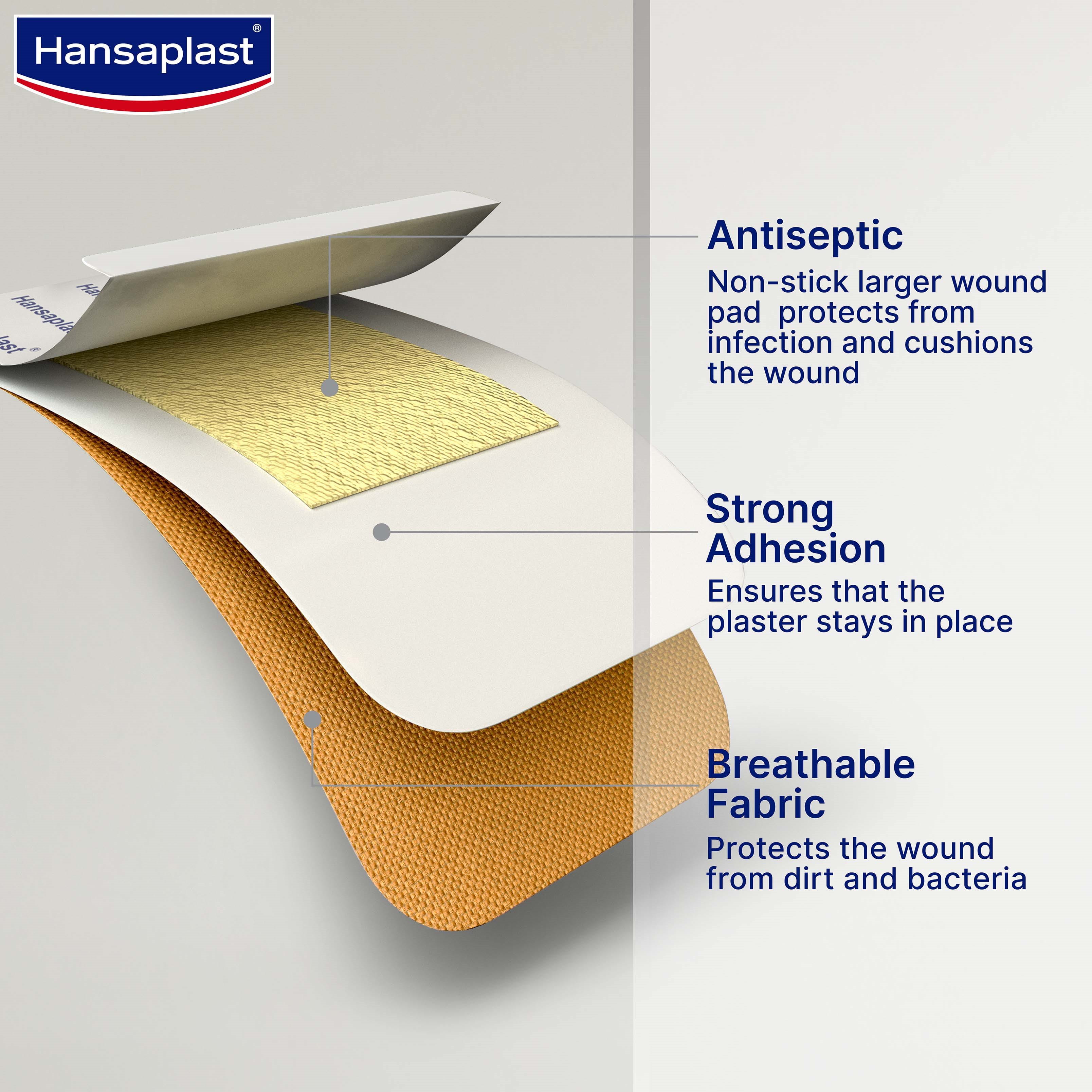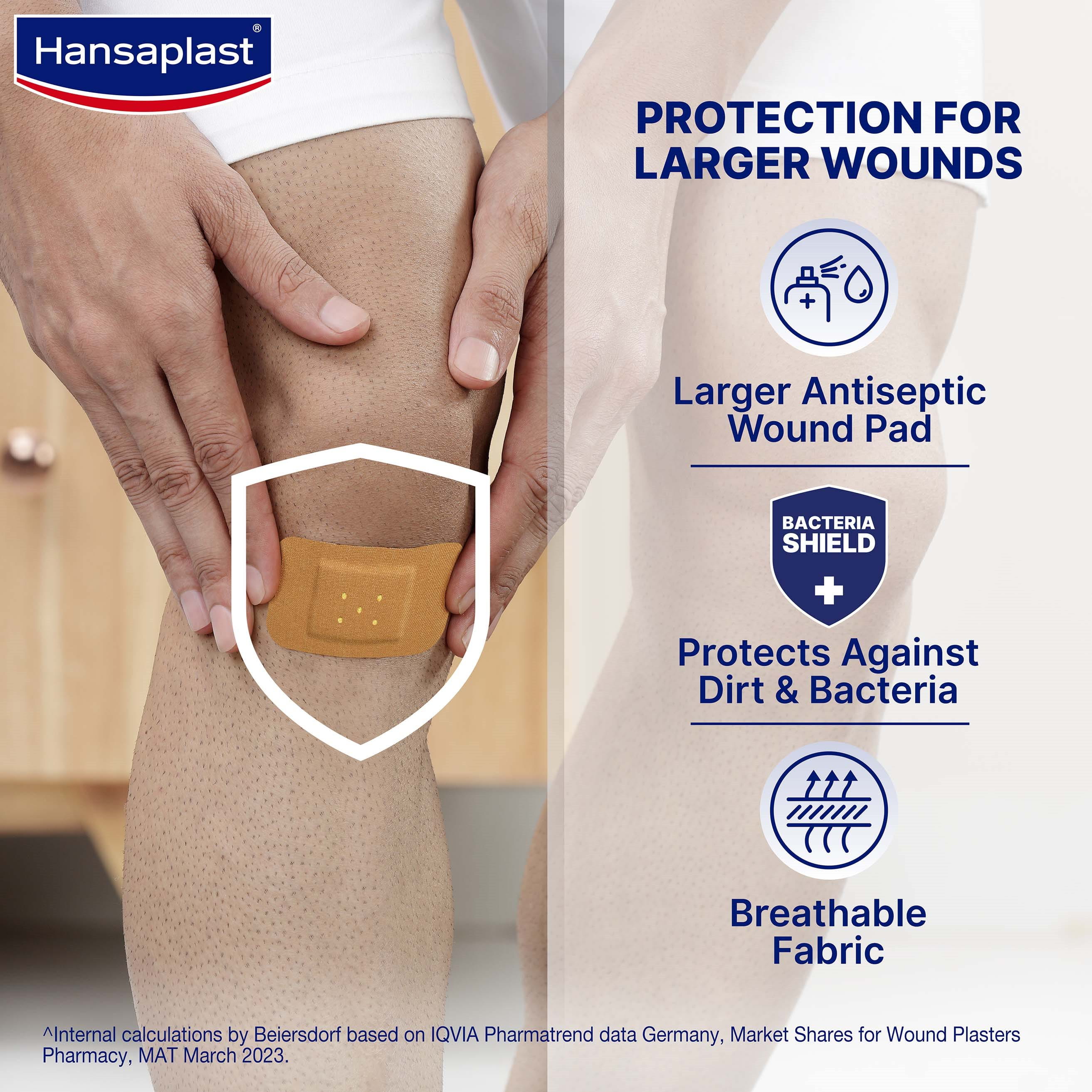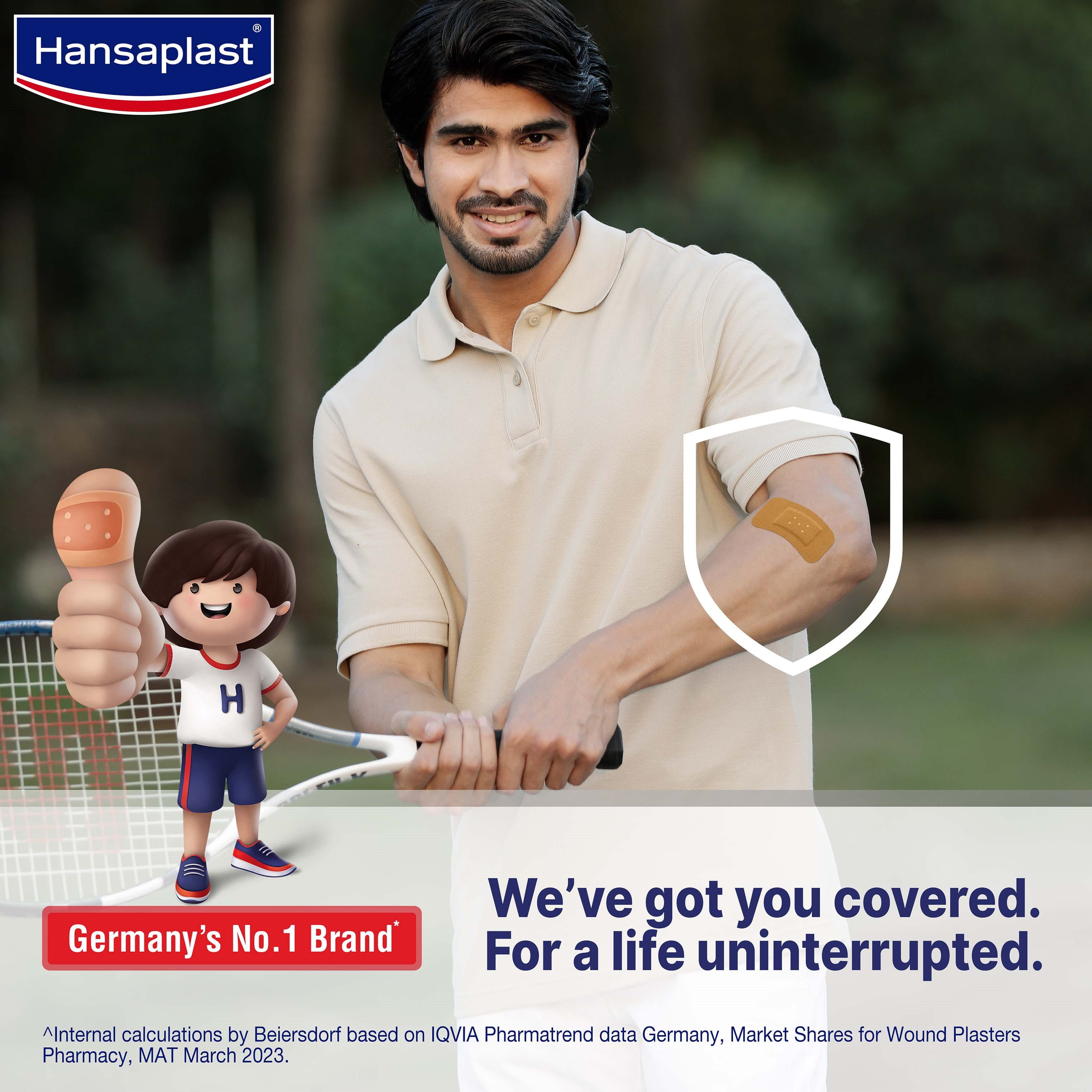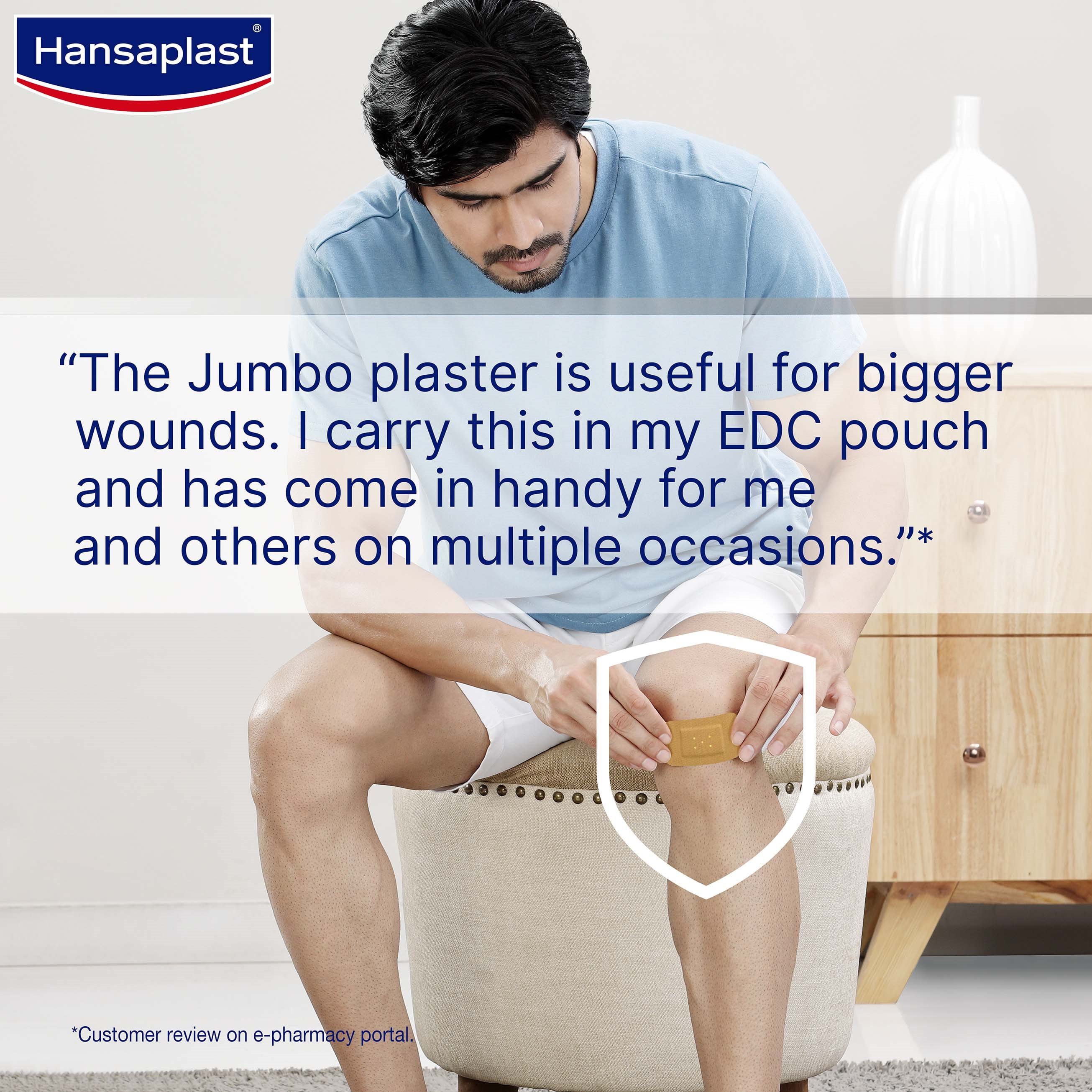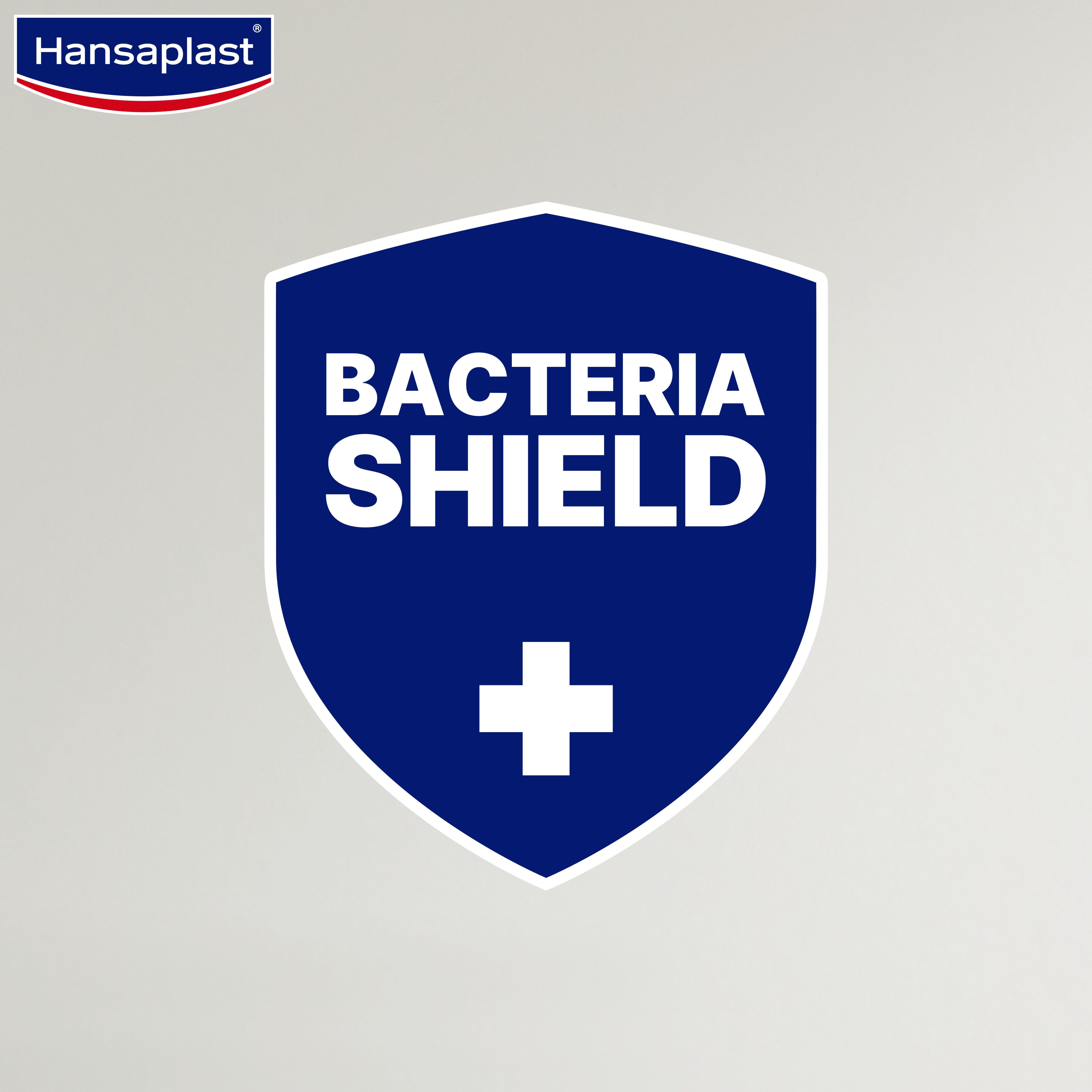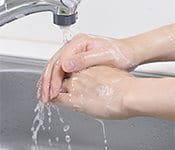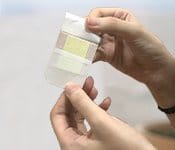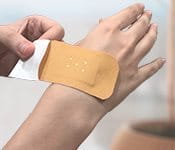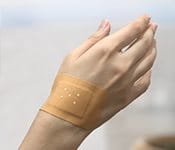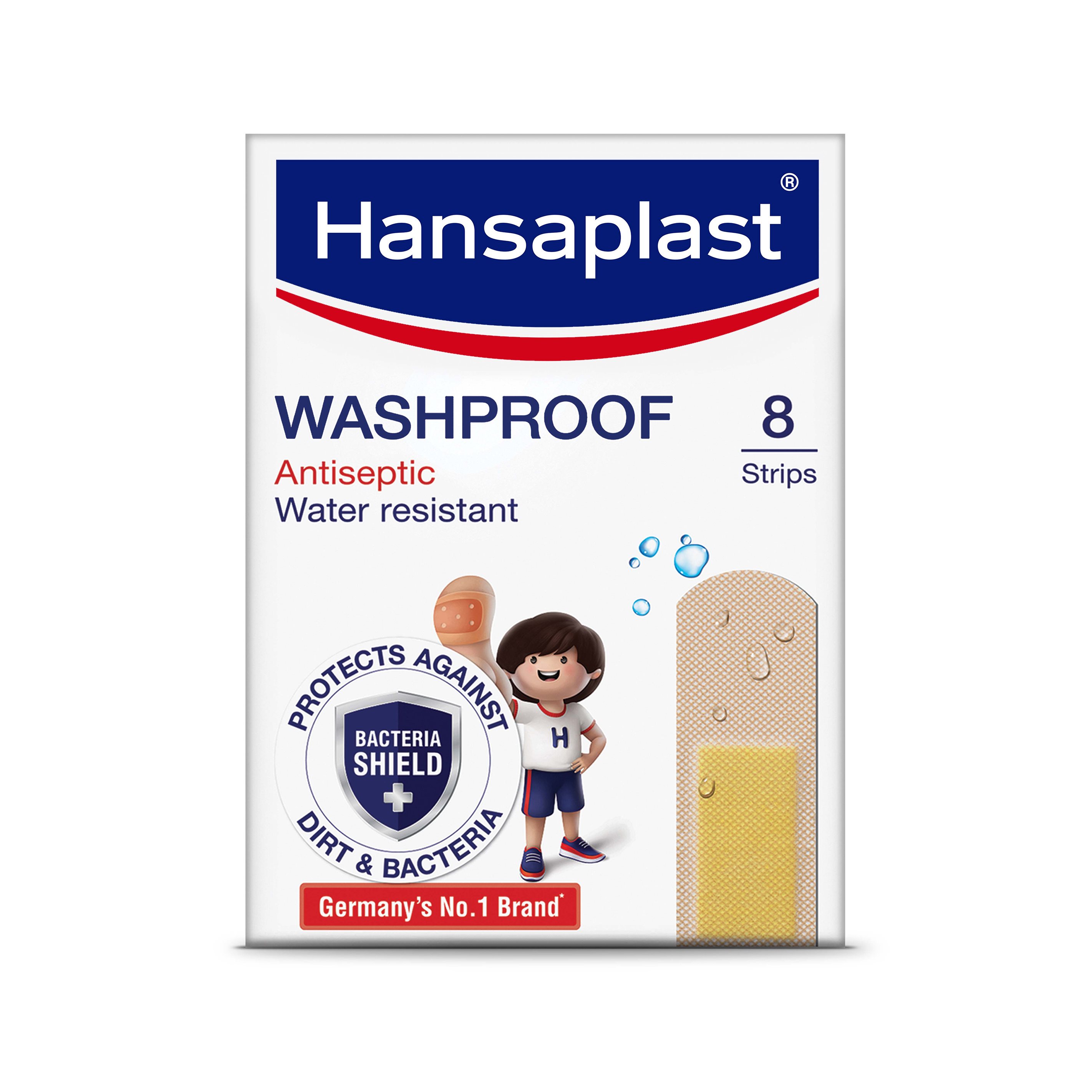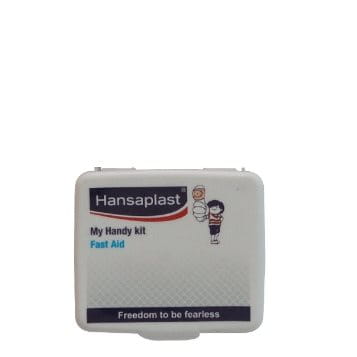Jumbo Plaster
Product Info
Jumbo
Hansaplast Jumbo Plaster ensures protection of larger wounds occurring from demanding situations such as outdoor activities, housework, travel, or everyday tasks that are undertaken. When your wound is significantly large, it is advised to use a jumbo plaster. It offers superior protection against large wounds with a bigger antiseptic pad. The plaster offers better protection and coverage to the wound. It is further equipped with better adhesion that sticks well to the skin.

*protects against dust and bacteria
How To Use
-
When to use a Jumbo Wound Plaster?
Jumbo wound plasters are designed specifically to provide optimal coverage to bigger wounds. They come with an antiseptic XL wound pad so that your wound stays protected from the entry of bacteria or other contaminants. Its enhanced adhesion sticks well to the skin, offering long-lasting protection.
Use these plasters in case of larger wounds that cannot be covered with regular plasters. They are easy to apply and convenient for day to day use.
-
What is the size of a Jumbo Wound Plaster?
The size of one Jumbo Wound Plaster is 72 mm x 40 mm. They come with an XL antiseptic wound pad to provide optimum coverage for larger wounds. Hansaplast Jumbo plasters are made with strong, skin-friendly, and breathable fabric that sticks well on the skin, so you can go about your daily routine hassle-free.
-
Can large wounds be managed at home?
Even large wounds can easily be managed at home, as long as they are not deep. You can use a jumbo bandage to secure the wound and follow the steps given for application. The larger size of the plaster, its XL antiseptic wound pad and enhanced adhesion make it perfect for treating larger wounds, right at home.
In case the wound is too large to be covered by a jumbo bandage, you can use cotton gauze and Hansaplast fixation tape to secure it in place. If the wound is too severe to treat at home, consult a doctor immediately.
-
How often should you change the bandage on large wounds?
Large wound plasters should be changed once every day. If your wound is leaking pus or blood and the wound plaster gets soaked through, change it immediately and check for signs of infection. Clean the wound between each change and do not leave it open for too long. Make sure to dispose of the used wound plaster in the proper manner. Stop applying the jumbo bandage only once the skin has healed completely. -
When to see a doctor for deep cuts?
While shallow cuts can be treated successfully at home by simply using Hansaplast wound plasters, you should consult a doctor if-
- The wound is bleeding profusely
- Has jagged, irregular or gaping skin
- Has debris, glass or dirt embedded inside
- Is showing signs of infection, such as redness, swelling or excess pus
If the wound is taking an unusual amount of time to heal, it is advisable to check with a doctor.
Diabetic patients should be extra careful with open wounds and keep a close eye on the healing process.




